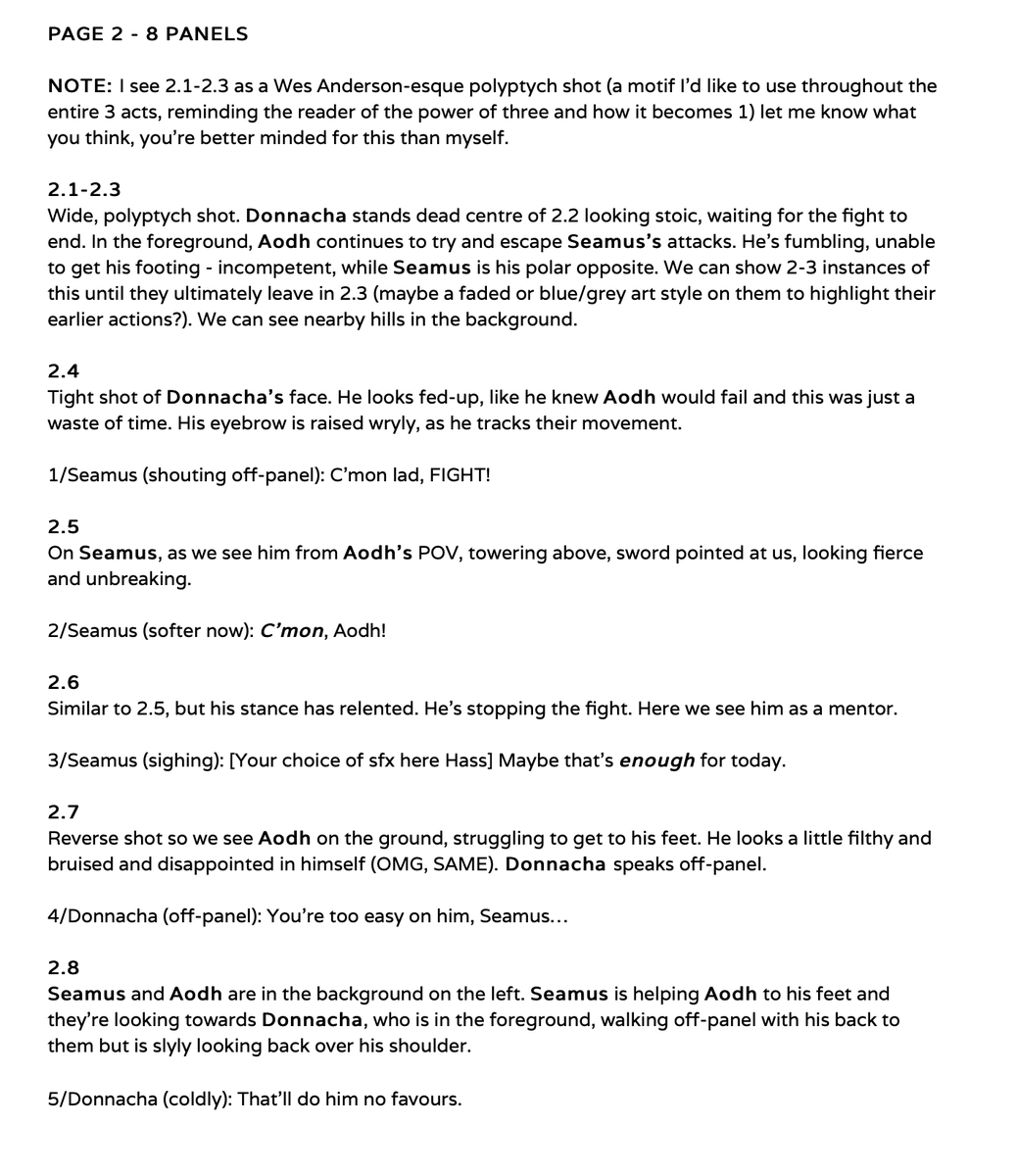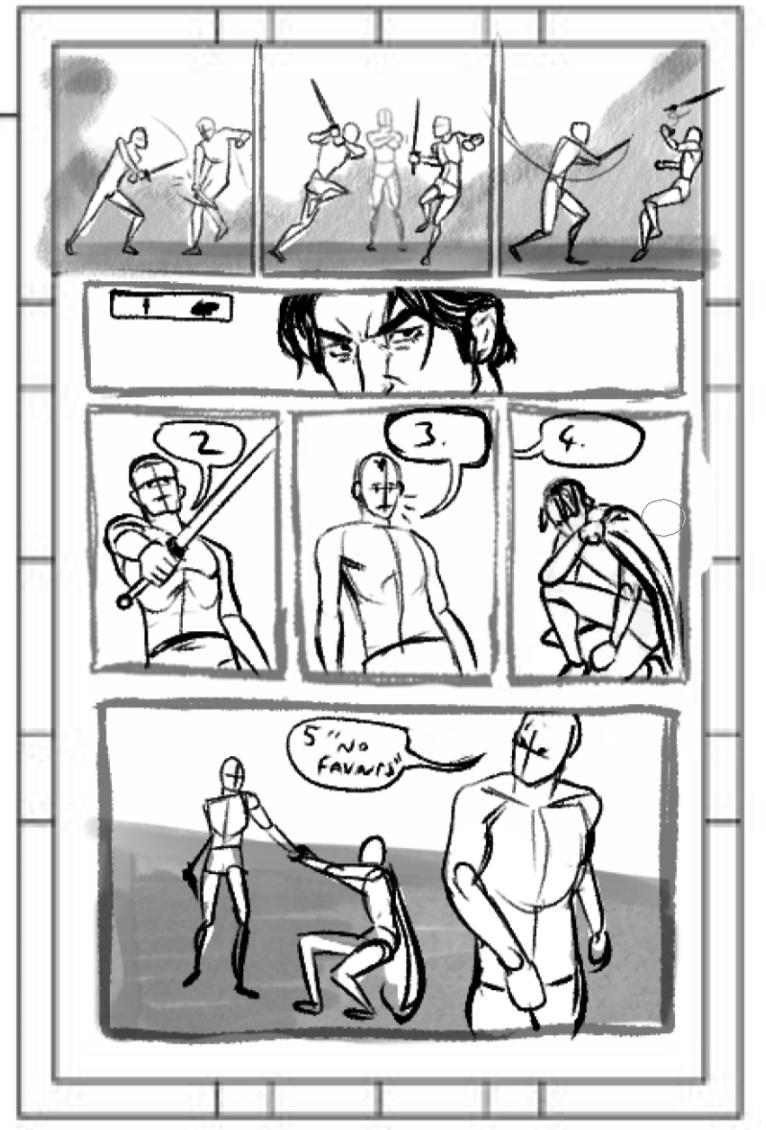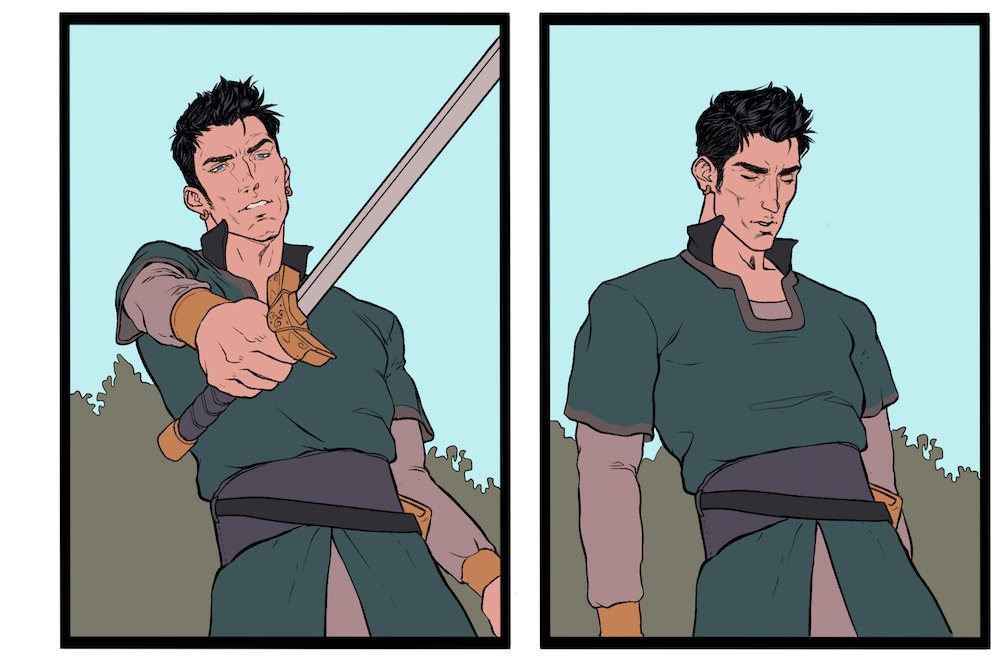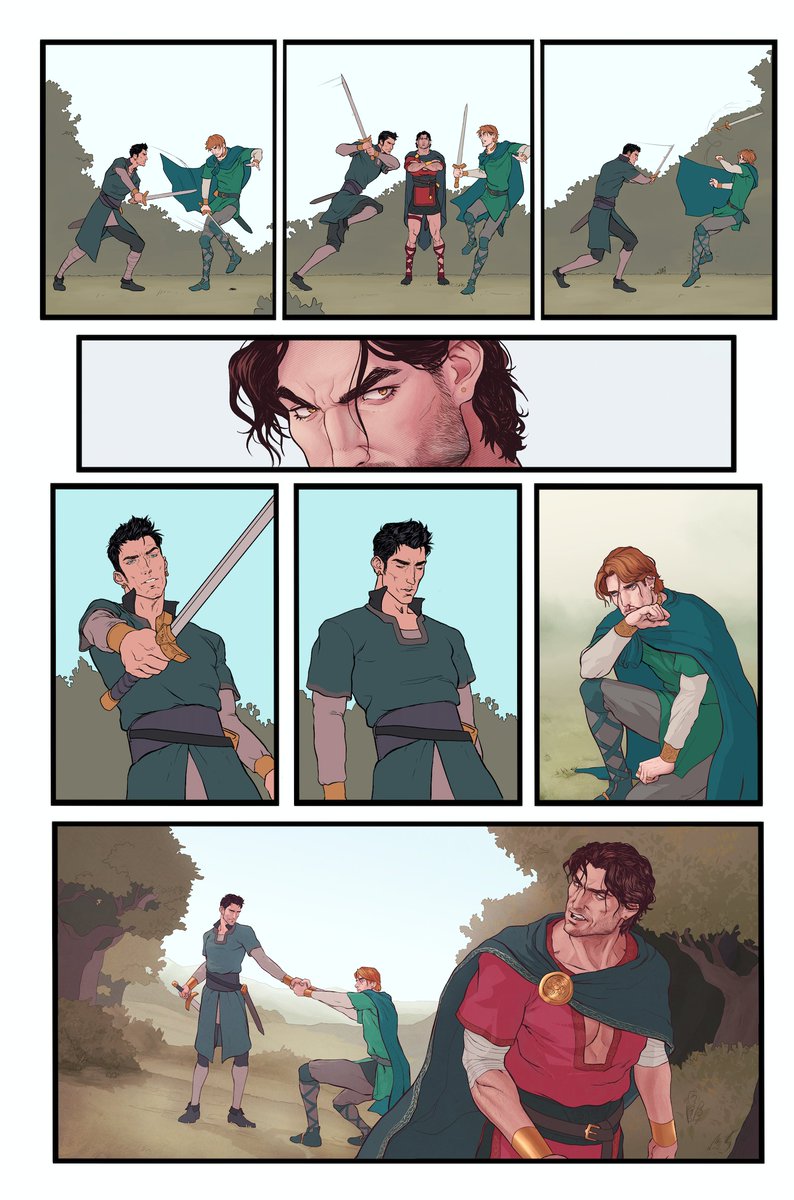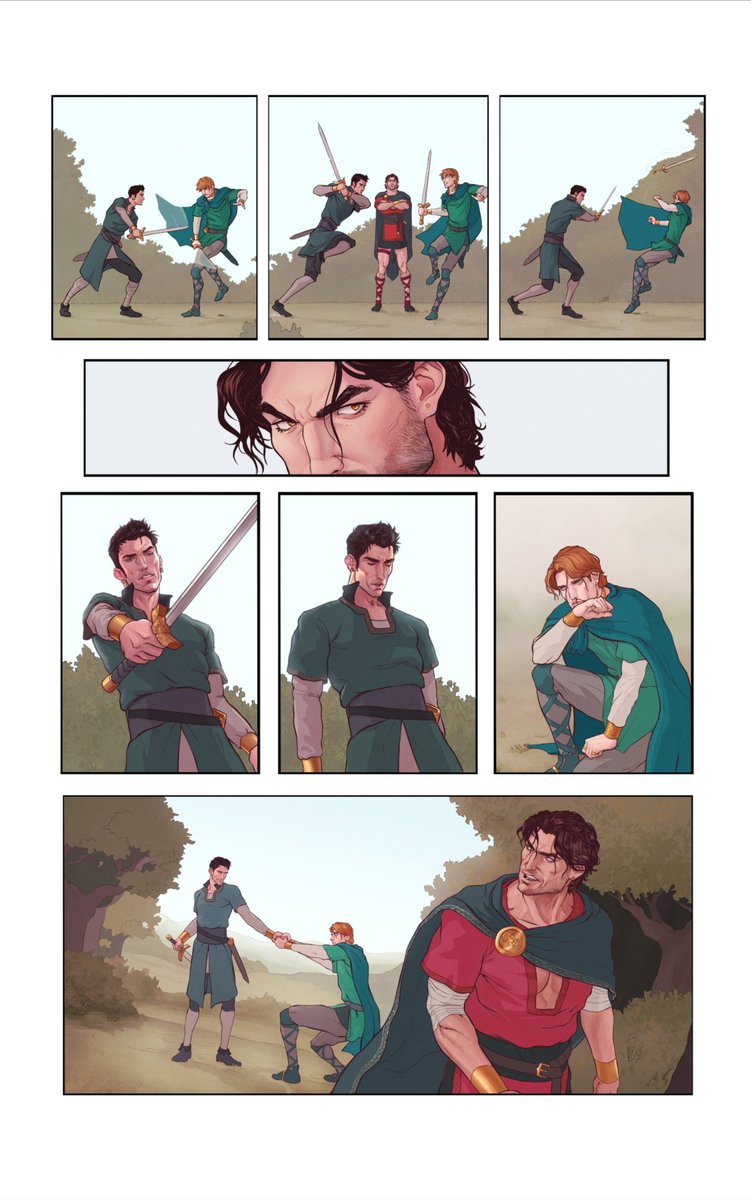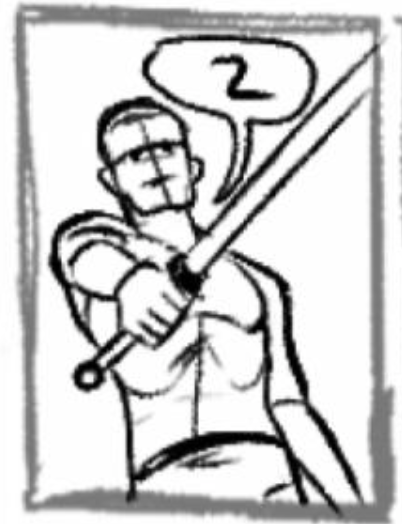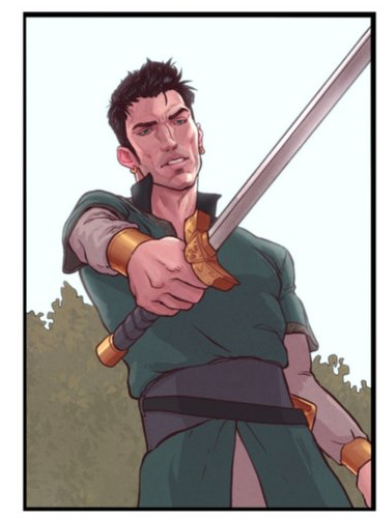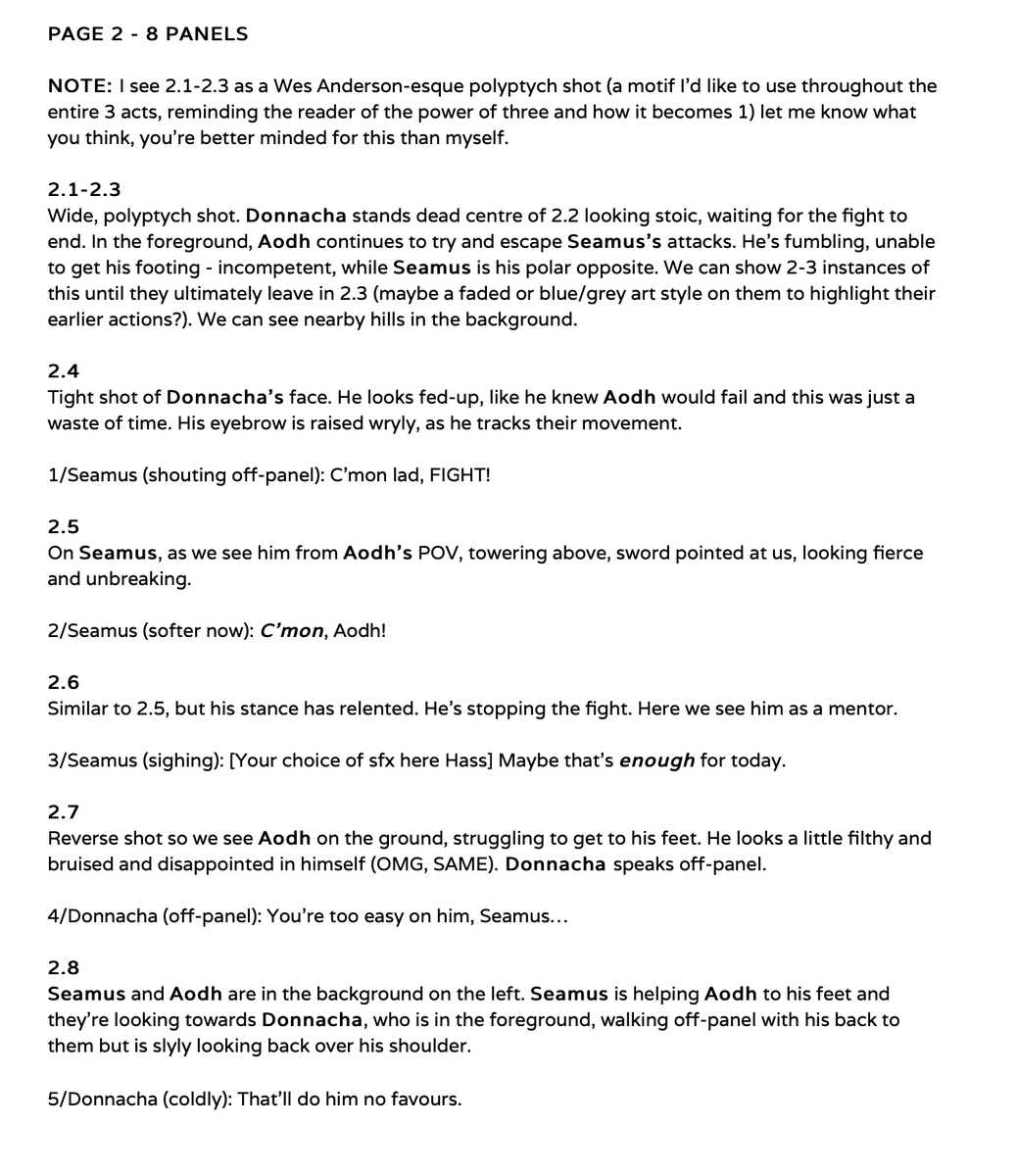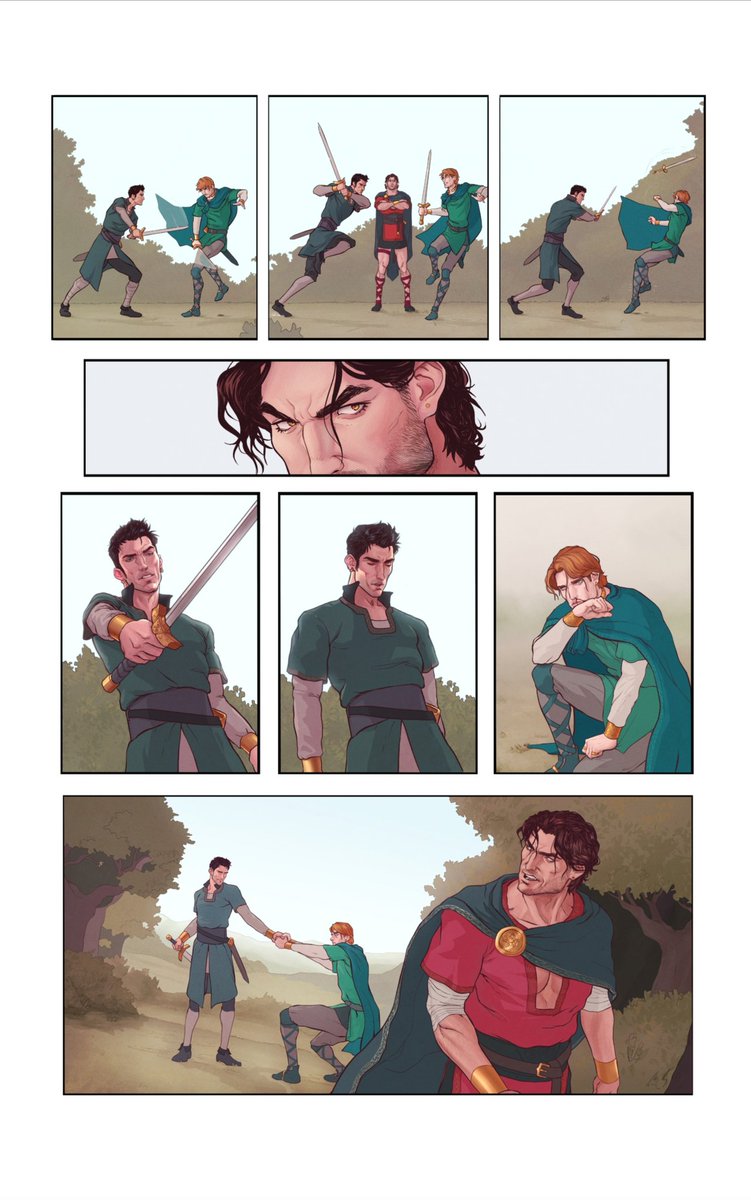Good evening!
Tonight I felt like it would be fun to take a look at the craft of making comics - and to look in detail at how a comic page goes from a script to finished art (pre-lettering, in this case)
Tonight I felt like it would be fun to take a look at the craft of making comics - and to look in detail at how a comic page goes from a script to finished art (pre-lettering, in this case)
We& #39;re gonna look at a page from @IanFayArt, @HassanOE, @Becca_See and mine& #39;s upcoming comic, MORRIGAN, specifically page 2.
So this is not by any means the way to make comics, this is just how *this team* makes *this comic*.
You work to your strengths.
You work to your strengths.
So in this comic, Ian is doing both lineart and color work, Hassan is the letterer, Becca is the designer and I& #39;m the writer.
(sometimes lineart and colors are done by two different people, sometimes the one person makes the whole dang book - depends on you)
So this first issue of the book is 20 pages long. It was originally 22 in the first draft of the script - but by the time I had what is our current draft*, we had dropped two pages
*there& #39;ll be one more final lettering draft once all the artwork is in - that& #39;s just good practice
*there& #39;ll be one more final lettering draft once all the artwork is in - that& #39;s just good practice
Your first draft?
Rougher than gravel and sandpaper.
You& #39;ll never use it.
But you need to make it.
Because you can& #39;t edit a blank page.
Rougher than gravel and sandpaper.
You& #39;ll never use it.
But you need to make it.
Because you can& #39;t edit a blank page.
Before writing that draft, I laid out everything I knew I wanted/needed to have happen in this issue.
I then went back and identified which ones needed more weight, more space.
From there I linked those moments that can work well together into scenes.
I then went back and identified which ones needed more weight, more space.
From there I linked those moments that can work well together into scenes.
From there I bulletpointed a page 1-22 (or 1-20 in the later drafts) and started working out where I can place those scenes to work best with each other, one or two lines for each page
(Post-it notes are excellent for quick rearrangment to see how it changes the flow of a story)
(Post-it notes are excellent for quick rearrangment to see how it changes the flow of a story)
And once I& #39;m happy with that order, I start scripting the first draft.
You don& #39;t have to script in order, I find it can be easier to jump around the script so it starts to feel less like you& #39;re just chugging along on a track.
You don& #39;t have to script in order, I find it can be easier to jump around the script so it starts to feel less like you& #39;re just chugging along on a track.
Once that draft is done, I send it off to some folks I trust to give me honest critical feedback and then I forget about that script for like a week or two so I can return to it with fresh eyes and a crap tonne of notes from those people of everything that works and doesn& #39;t work
And then we repeat that process until we get a draft we& #39;re happy with for the art process to start.
With that in mind, here is the version of Page 2 from the script that I then sent to @IanFayArt
The page is broken down into panels (the quantity of which is noted at the top of the page, so an artist knows how many to expect in the script, in case a page goes missing or a part gets deleted) numbers 2.1-2.8 (i.e. Page 2, Panel 1 is 2.1 etc) https://twitter.com/Motherfocloir/status/1317546847762866177">https://twitter.com/Motherfoc...
Dialogue is numbered for each instance of a word balloon (though your letterer, who I can guarantee knows better than you should be given freedom to adjust that as needed) https://twitter.com/Motherfocloir/status/1317546847762866177">https://twitter.com/Motherfoc...
It& #39;s worth noting as well that I very much have an understanding with each and every artist I work with that both panel quantity and composition is at best a suggestion from me. They have free reign to change it as needed, as long as I know about it to adjust dialogue etc.
Why?
1) I& #39;m not here to tell them how to do their job
2) I sure as hell don& #39;t know *how* to do their job.
3) They& #39;re the ones who have to draw the damn thing.
4) If they can see a better way to make a page work, they should go for it imo
This is a collaborative art for a reason
1) I& #39;m not here to tell them how to do their job
2) I sure as hell don& #39;t know *how* to do their job.
3) They& #39;re the ones who have to draw the damn thing.
4) If they can see a better way to make a page work, they should go for it imo
This is a collaborative art for a reason
(I do thumbnail out possible page layouts as I& #39;m writing it, but that& #39;s just for me so I know there& #39;s at least one way that page can work - no artist ever sees it unless they request it)
So @IanFayArt, who& #39;s a legit art wizard, reads through the script and starts thumbnailing out his layouts for pages to see what works and what doesn& #39;t etc.
Here& #39;s his thumbnail for Page 2
Here& #39;s his thumbnail for Page 2
(You can see here how he& #39;s labelling the dialogue using the numbering from the script to make sure he& #39;s leaving space in his compositions for Hassan to work his lettering magic afterwards) https://twitter.com/Motherfocloir/status/1317550046632660992">https://twitter.com/Motherfoc...
And from there to even more detailed pencils/inks.
One advantage of Ian also being the person coloring his own work is he knows what he needs to draw now at the pencil and ink stage, and what he can actually render in the coloring stage.
One advantage of Ian also being the person coloring his own work is he knows what he needs to draw now at the pencil and ink stage, and what he can actually render in the coloring stage.
Once all inking is done, it& #39;s time to color and we start of with what is known as color flats.
Flatting is the first step in comic coloring, and involves separating the individual elements of a page with flat color to allow the colorist to easily select an area for coloring
Flatting is the first step in comic coloring, and involves separating the individual elements of a page with flat color to allow the colorist to easily select an area for coloring
This allows a colorist to quickly select all instances of let& #39;s say Seamus& #39;s skin in this image with just one click, and without worrying that they& #39;ll accidentally color his hair at the same time.
Flatting is a thankless job, and flatters don& #39;t get paid enough.
Flatting is a thankless job, and flatters don& #39;t get paid enough.
Also super useful if, down the line, it turns out Seamus& #39;s sword was meant to have a brass hilt
You can select all instances of it using your flat layer, without having to lasso everything again, especially if the rendering was already done.
You can select all instances of it using your flat layer, without having to lasso everything again, especially if the rendering was already done.
And here& #39;s a closer shot of the color WIP for Panel 8
Look at the levels of detail he& #39;s putting in on Donnacha (the big man himself in the foreground)
Look at the levels of detail he& #39;s putting in on Donnacha (the big man himself in the foreground)
Ian& #39;s sending me these throughout the process. He& #39;s a fantastic communicator, which makes for an equally fantastic collaborator.
Communication is always key
Communication is always key
And here?
This is the final page (pre-lettering and final design) as illustrated by actual wizard @IanFayArt
I mean, just *look* at that detail!
This is the final page (pre-lettering and final design) as illustrated by actual wizard @IanFayArt
I mean, just *look* at that detail!
Let& #39;s look at Panel 5 in isolation
1. Thumbnails
2. Pencils and Inks
3. Flat Color
4. Finished color and rendering
He& #39;s an absolute talent.
1. Thumbnails
2. Pencils and Inks
3. Flat Color
4. Finished color and rendering
He& #39;s an absolute talent.
Worth noting that Ian& #39;s taking some limited commissions for Christmas https://twitter.com/IanFayArt/status/1316373708362088450">https://twitter.com/IanFayArt...

 Read on Twitter
Read on Twitter